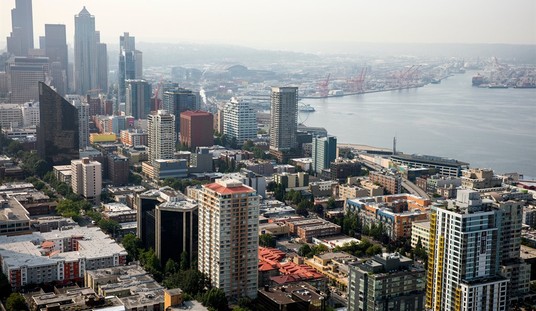What did the Q4 GDP number and the January jobs report show us? To listen to the White House, the New York Times, and Obama administration apologists, it supposedly proves that “austerity” is the culprit behind the lack of growth. Newsbusters catches the Times blaming “austerity efforts” are damaging economic recoveries in developed nations:
The drop in American exports stemmed in part from a decline in economic growth in Europe, where governments have also been cutting spending in a bid to balance budgets. The parallel contractions are likely to provide fodder for economists who argue that austerity efforts have gone too far in many developed economies.
The surprisingly weak numbers could also force politicians to limit the cuts that are scheduled to take effect if Congress fails to produce a budget bargain in the coming weeks and strengthen the argument that deficit reduction is a lesser concern than job creation.
“Our economy is facing a major headwind, and that’s Republicans in Congress,” said the White House spokesman Jay Carney.
Republicans said the White House was not advancing concrete plans for creating new jobs and stimulating the economy.
The “headwinds” referenced by Carney are the upcoming sequestrations of spending cuts — that were proposed by the White House, not Republicans, in 2011. The excuse also assumes that the US has actually implemented austerity measures. Despite the quarter-on-quarter reduction in federal spending in the GDP report this week, that’s not the case at present, nor is it the case in the future — even with the sequestrations in place. John Merline of Investors Business Daily makes that plain in the chart of the day:
According to monthly spending data from the Treasury Dept., total federal spending — which includes transfer payments and other federal outlays not counted by the BEA — increased by $98 billion in Q4 compared with Q3. And spending was up $31 billion when compared with Q4 2011.
For the entire year, spending in 2012 was virtually unchanged from 2011, and was up $86 billion over 2010, a year when the government was still spending stimulus money in earnest.
Plus, the “fiscal cliff” deal worked out between President Obama and the Republicans actually added almost $50 billion to planned spending in 2013, and a total of $332 billion over the next decade, according to the Congressional Budget Office.
Almost half of the 2013 increase will go to pay extended unemployment benefits, which Democrats have long argued are highly stimulative.
Reid himself has said that unemployment benefits “help our economy because recipients spend the cash they receive on the things they need right away.”
We’ll get back to stimulus in a moment. Merline points out that even the sequestrations aren’t cuts in overall federal spending, but reductions in the rate of increase, emphasis mine:
In addition, even if the “sequester” should go through, federal spending will continue to climb.
In fact, if nothing else changes, spending in 2013 will be $3.6 trillion, an increase of nearly 2% over 2012, according to data from the CBO. That’s because the sequester’s “cuts” are actually just reductions in planned spending hikes.
Nor is the federal government operating anything close to an austere budget when looked at as a share of the economy. According to the CBO, spending this year will account for 22.4% of GDP, a level reached only eight times since 1946 — four of which occurred under Obama.
This is why Republicans are smart to keep the sequesters in place. The deficit explosion undermines confidence in the dollar and the overall American economy, which produces a downward pressure on expansion. That would be an acceptable short-term tradeoff if the extra spending produced long-term economic growth. The Q4 contraction demonstrates that’s not the case, though.
Gerri Willis at Fox Business comes to the same conclusion after calculating all of the stimuli and bailouts provided by the government over the last six years or so (via Nick Gillespie). The total? $7.6 trillion. What did it do for us? Well …
Whew! That’s a lot of money and where are we? Nowhere, as far as I can tell. Unemployment is at 7.8%, exactly where it was when President Obama came into office.
The economy is contracting, shrinking, and consumers and taxpayers say they aren’t too happy. It’s no wonder. All of this money out the door and much of it will have to be paid back. Our economy hasn’t recovered. The stimulus spending was a bust!
Next time you hear Paul Krugman say we need more stimulus spending, ask him: where’s my $7.66 trillion, mister?









Join the conversation as a VIP Member